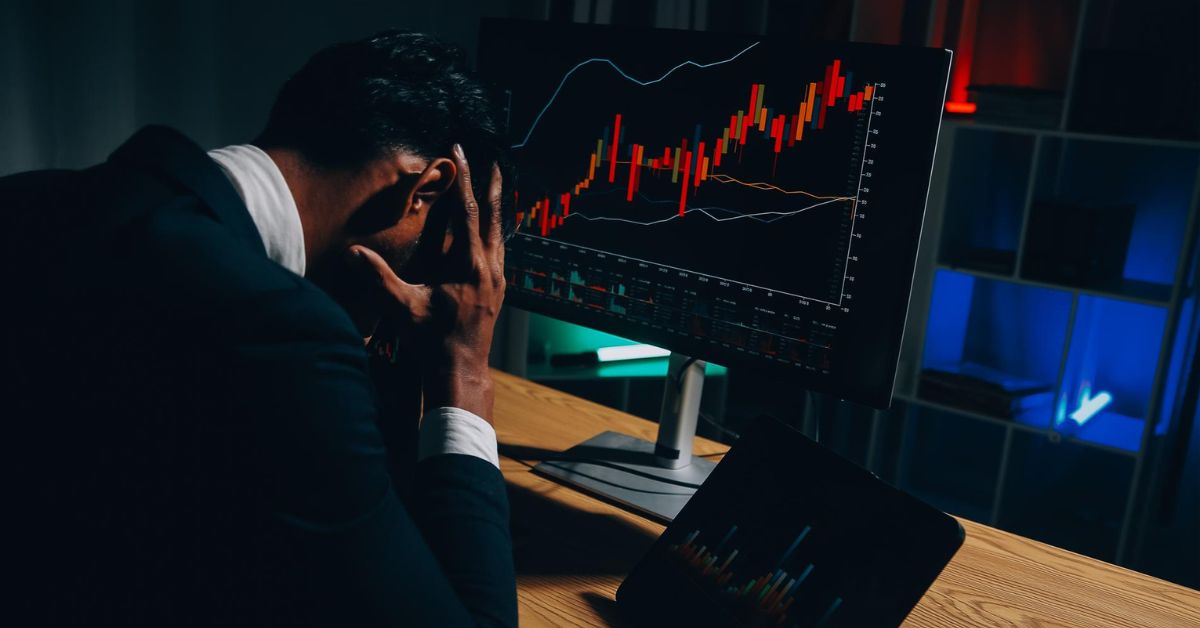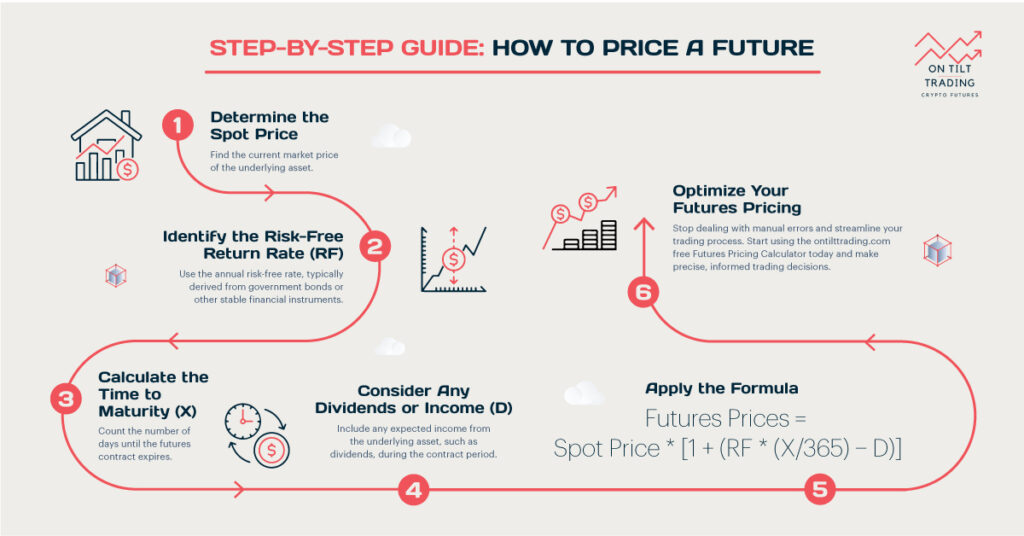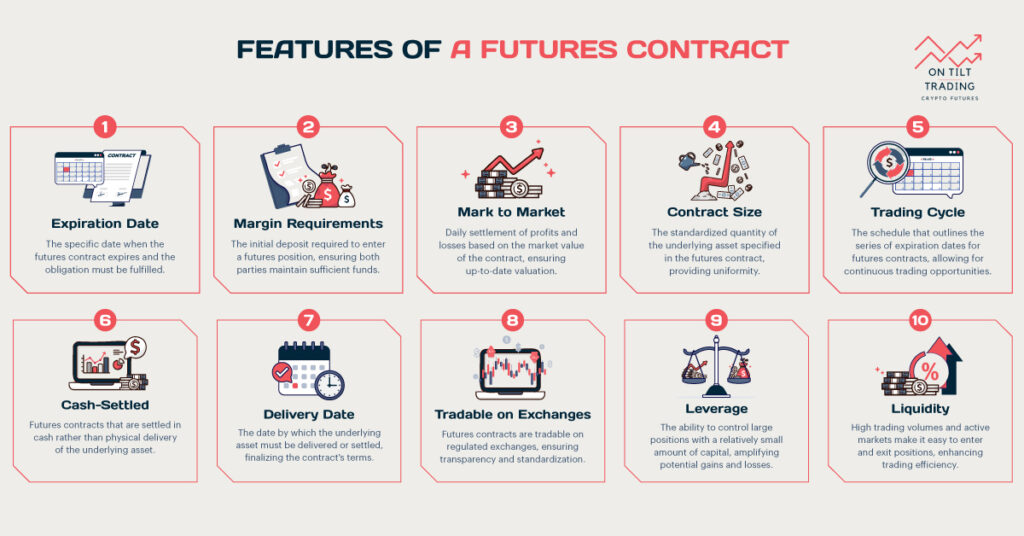Cryptocurrency futures have gained significant popularity among traders looking to predict the future price of digital assets. Despite the potential for high returns, this trading method comes with substantial risks as well. So, what are the disadvantages of crypto futures trading? In this article, we will explore these risks in detail to help you make informed futures trading decisions. Let’s get started.
What are the Disadvantages of Crypto Futures

Crypto futures trading can offer lucrative opportunities, but it also carries substantial risks. You can navigate the market effectively and protect your investments if you know these disadvantages. The following are some of the most significant disadvantages of trading Crypto futures:
High Volatility
The cryptocurrency market is known for its extreme volatility. Cryptocurrencies have huge price swings in comparison to traditional financial markets. The high volatility is mainly due to the small market capitalization of most cryptocurrencies, speculative trading, and news.
This volatility can result in significant gains, but it can also result in substantial losses when trading crypto futures. For example, regulatory crackdowns or security breaches can cause the price of a cryptocurrency to plummet.
If you’re holding a long futures position, this unexpected drop could wipe out your investment. Alternatively, positive news can cause prices to soar, but the market’s unpredictable nature makes it hard to profit consistently.
Rising volatility in the cryptocurrency market can also result in unprofitable futures contracts. Traders must monitor the market constantly and make quick decisions to manage their positions.
It’s tough for those who don’t trade full-time because missing a crucial market move can end up costing them big. Therefore, traders of cryptocurrency futures are at a disadvantage due to the high volatility.
Leverage Risks
One of the main attractions of crypto futures trading is the leverage, which allows traders to control a large position with a small investment. But leverage isn’t without its downsides. In addition to amplifying profits, it can also amplify losses, putting you at a higher risk of losing more than you invested.
For example, if a trader uses 10x leverage, a 10% adverse move in the cryptocurrency’s price can result in a 100% loss of the trader’s capital. Thus, even minor market fluctuations can have a significant impact on leveraged positions. Due to the possibility of such amplified losses, leverage is a risky tool, especially for beginners.
Leveraged positions often require traders to maintain a minimum margin level. If the market moves against their position, they might get a margin call, forcing them to deposit more money.
If traders don’t meet the margin requirements, they can lose their entire position, exacerbating the financial risk. Due to this, leverage has a significant disadvantage in cryptocurrency futures trading, especially in volatile markets.
Lack of Regulation

The cryptocurrency market is still in its infancy, and it’s barely regulated compared to traditional financial markets. In the crypto futures industry, this lack of regulation can pose significant risks for traders.
It’s easier for people to manipulate the market and commit fraud without stringent regulations. In an unregulated environment, unscrupulous actors can conduct pump-and-dump schemes, which artificially inflate the price of a cryptocurrency before selling it for a profit, leaving other investors with significant losses. In addition, there are fewer protections for traders due to the absence of regulatory oversight.
Furthermore, a lack of regulation can result in market uncertainty and instability. Regulators in different countries are constantly updating their stances on cryptocurrencies, and sudden changes can have a dramatic effect on the market.
If a government bans crypto trading or introduces stringent regulations, it can cause prices to plummet, adversely affecting futures positions. As a result, those trading crypto futures suffer from the lack of a stable regulatory environment.
Complexity and Lack of Understanding
Crypto futures trading involves complex financial instruments that can be tricky for beginners. In contrast to spot trading, futures contracts include predicting the future value of an asset over a specified period. Thus, futures contracts require a solid understanding of market trends, technical analysis, and mechanics.
Some new traders don’t fully understand how futures contracts work, including leverage, margin requirements, and settlement. This lack of understanding can lead to poor trading decisions and big losses. When a trader fails to understand the risks associated with leveraged positions, he can quickly lose all of his money.
Furthermore, the crypto market operates 24/7, requiring constant attention and quick decisions. Fast-paced markets and complicated futures trading can overwhelm those without experience or knowledge. Therefore, the steep learning curve and the potential for costly mistakes make crypto futures trading a significant disadvantage.
Counterparty Risk
In crypto futures trading, the counterparty risk refers to the possibility that the other party will default on their obligations. Due to the relatively new and sometimes unstable nature of many cryptocurrency exchanges, this risk is especially pronounced with crypto futures.
When trading crypto futures, traders trust the exchange to act as an intermediary and ensure both sides fulfill their obligations. However, not all exchanges have the same level of reliability or financial stability.
Many exchanges have been hacked, gone bankrupt, or engaged in fraudulent activity, leaving traders unable to access their funds. Therefore, choosing the proper exchange is crucial to reducing counterparty risk.
For example, exchanges have collapsed or been hacked several times, causing traders to lose money. These incidents highlight the need to choose reputable exchanges with solid security measures and financial backing. However, even with the best precautions, counterparty risk remains an inherent disadvantage of crypto futures because the market is still evolving.
High Fees and Costs

Crypto futures trading typically entails higher fees and costs than spot trading. The cost of trading futures can substantially impact a trader’s profitability.
For starters, most exchanges charge a fee for opening and closing futures positions based on the size of the trade. These fees can really add up, especially for active traders who constantly enter and exit positions. There may be other costs besides trading fees, like funding rates, which are periodic payments made between traders holding long and short positions.
Secondly, using leverage in futures trading can result in higher borrowing costs. When a trader uses leverage, they borrow funds to increase their position size. Usually, borrowing these funds involves interest payments, which can eat into profits or exacerbate losses. Additionally, if you hold a leveraged position for a long time, the cumulative cost of leverage can add up.
In addition, hidden costs like slippage, where the executed price of a trade differs from the expected price, can reduce profitability even more. In highly volatile markets, such as cryptocurrencies, slippage is more common, causing traders to receive less favorable prices than expected.
Overall, high fees and costs make crypto futures trading difficult due to direct payments, borrowing costs, and hidden costs like slippage.
Margin Calls and Liquidation
A significant risk of crypto futures trading is margin calls and forced liquidations. Trading on margin requires traders to keep a minimum amount of equity in their accounts to keep their leveraged positions. If the market moves against their position and the account equity falls below this required margin level, a margin call is triggered.
Margin calls require traders to deposit additional funds to bring their accounts up to the required margin level. If the trader doesn’t meet the margin call, the exchange will automatically liquidate their positions to cover their losses. The forced liquidation can lead to substantial financial losses because positions are typically closed at unfavorable prices.
For example, if a trader uses high leverage, his account may drop below the margin requirements quickly if the market goes down suddenly. When this happens, the exchange will liquidate the trader’s positions to prevent further losses, which can wipe out the trader’s capital.
In the highly volatile crypto market, where prices can fluctuate dramatically within short periods, margin calls and liquidations are more likely. Traders must monitor their positions constantly and be prepared to act swiftly if margin levels decrease. The stress and financial risk of margin calls and forced liquidations make crypto futures trading really hard.
Limited Market Hours and Liquidity
Cryptocurrency futures trading faces challenges related to market hours and liquidity, which can have a significant impact on effectiveness and profitability. In spite of crypto markets’ round-the-clock nature, liquidity can vary significantly at different times of the day.
The liquidity of an asset refers to its ease of buying or selling without affecting its price. During low liquidity periods, like weekends or off-peak hours, it can be hard to execute big trades without causing big price swings. It can lead to slippage, so trades are executed at less favorable prices than expected.
In addition, trading volume for crypto futures can be lower than spot markets, particularly for less popular cryptocurrencies. Low trading volumes can lead to wider bid-ask spreads, so the difference between buying and selling prices is bigger. It makes entering and exiting positions more expensive and can reduce profits.
Additionally, some futures contracts may have specific trading hours that differ from the 24/7 nature of the spot market. As a result, traders are not able to adjust their positions in response to market events, which can result in significant price movements. For example, a major news event outside the trading hours of a futures contract can cause a gap in prices when trading resumes, causing substantial losses.
Overall, limited market hours and liquidity are big downsides when trading crypto futures, as they can make it hard to manage risk and execute trades efficiently.
Psychological Stress

Due to the high stakes and volatile nature of the market, trading crypto futures can be incredibly stressful. Monitoring the market 24/7 can cause sleep disturbances, anxiety, and burnout. The financial pressure of leverage exacerbates stress, as small price movements can lead to significant gains or losses, causing impulsive decisions.
Furthermore, experiencing substantial profits and unexpected losses can damage mental health. Psychological stress can affect a trader’s ability to make rational decisions, making it a disadvantage when trading crypto futures.
Read More: A Comprehensive Guide to Trading Crypto Futures US
Conclusion
Despite potential high returns, trading crypto futures has significant downsides, like high volatility, leverage risks, lack of regulation, and psychological stress. Recognizing these challenges is the best way to manage risks and make informed decisions.



